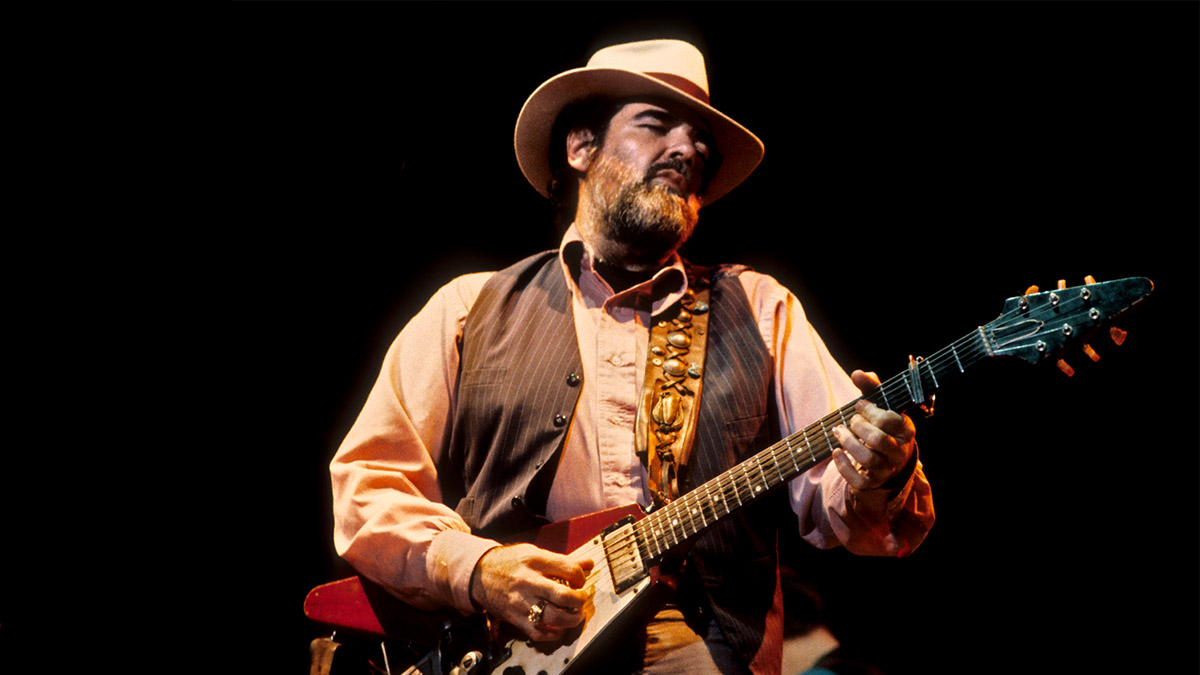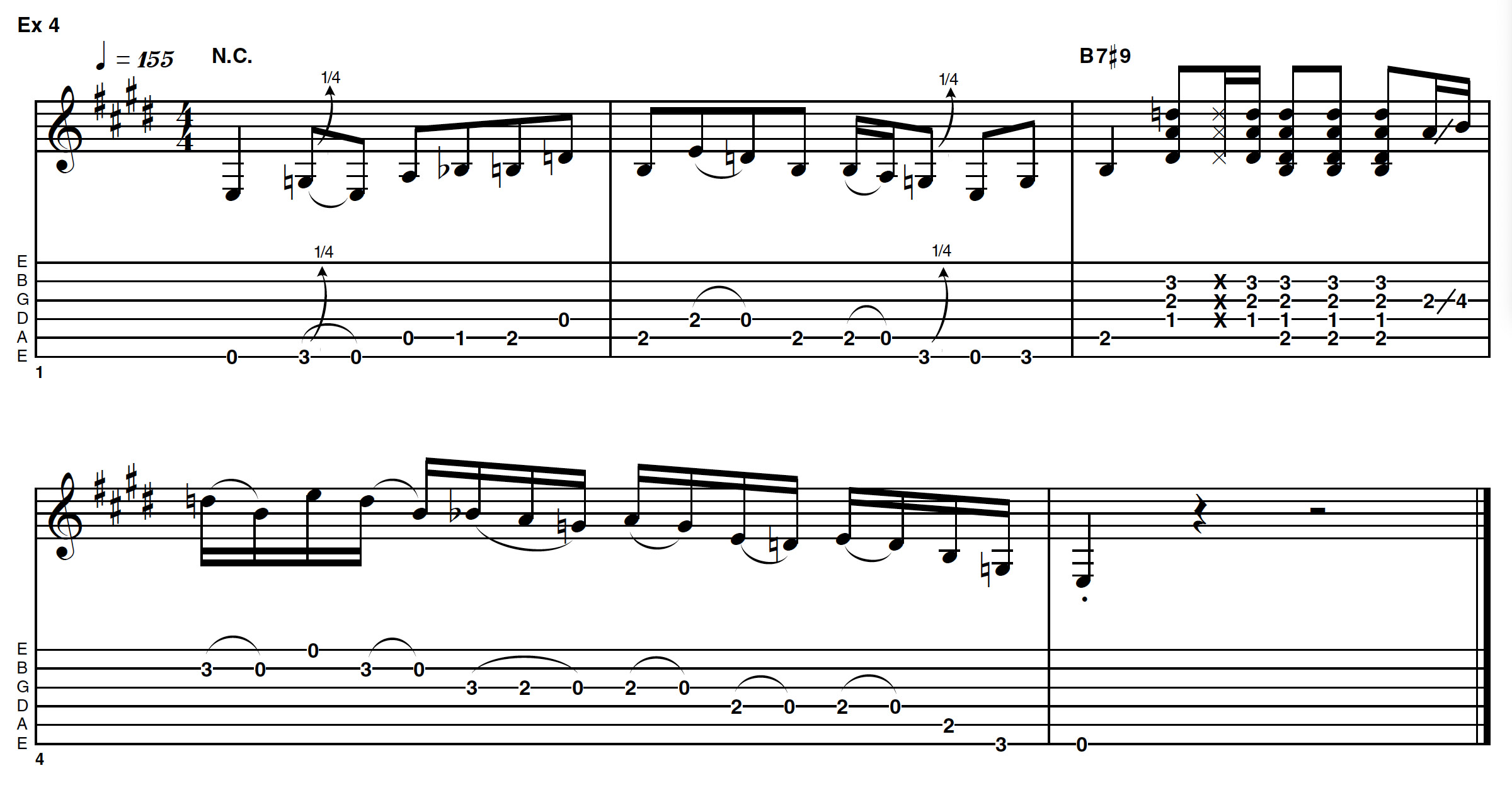Lonnie Mack is an unsung hero in the development of the modern guitar solo – learn the blues guitar pyrotechnics that lit a fire under Stevie Ray Vaughan
A key influence on SRV classics such as Scuttle Buttin', Lonnie Mack's trailblazing style is worth another look

Lonnie Mack is something of an unsung hero in the development of the modern guitar solo. He had a somewhat chequered career, reportedly through being difficult to pigeonhole and subsequently market, and it sounds as if he didn’t really play the ‘fame game’. Lonnie’s top priority was playing the music he wanted to play, not pandering to record companies for the sake of bigger profits.
Having said that, he did record several albums over the course of his career, the first of which, The Wham Of That Memphis Man!, introduced his loud, fast and precise technique to a generation of incredulous players.
Unfortunately, the British Blues Invasion and poor marketing resulted in something of a false start to his career. Nevertheless, he didn’t stop playing and came to be regarded as a contemporary to players such as Roy Buchanan, Albert Collins and Stevie Ray Vaughan. In fact, SRV enticed Lonnie to relocate to Austin, Texas, and co-produced what became his comeback album Strike Like Lightning in 1985.
The idea of the solo/examples here is to capture some of Lonnie’s style and combine it with the influence he clearly had on Stevie when creating the relentless instrumental Scuttle Buttin’. The energy level is pretty high at 155bpm and you’ll benefit greatly from routing some of the phrases slowly.
That said, this is most definitely not a technical study in any specific technique, though there are a couple of passages where you might want to use alternate picking.
Most of the time you’ll find the logical approach is picking the first note played on each string, followed by a hammer-on or pull-off. There’s a case for saying try this as fast as you can, then look at problem areas slowly. I hope you enjoy and see you next time!
Example 1

This first section establishes a pattern of starting with a strong root note, then launching into a single-note line or chord figure. It’s important to keep things moving and reference the chord harmony, as we only have drums and bass as backing, very much like SRV when he played with Double Trouble.
It’s also worth spending some time dialling in the right amount of drive to carry the single-note lines – but keep definition on the chords.
Example 2

Changing to A (or the IV chord), we’re no longer able to rely so much on open strings, but the moving triads of A7-D and G (all over the A implied by the bass) give a full sound that allows us to move things up a register for the following bar.
These higher notes fill less musical space, but I’m compensating by using doublestops after hitting a big open low E at the start of bar 3.
Example 3

In this section of the solo, we start with the V chord (B) – actually B7#9 – then change to the IV chord (A). In bars 1 and 3 I’m establishing the harmony by hitting the root note on beat 1, followed by a chord or doublestop figure.
In bars 2 and 4 I’m ‘answering’ with a single-note solo approach using the blues scale, plus featuring the major/minor 3rds of each chord as happens so often in the blues.
Example 4

For this final section, we’re returning to chord I, with a bar of B7#9 functioning as a turnaround. The first two bars feature a twanging melodic passage using the lower strings.
Bar 3 is where we change to B7#9 – an extended version of the V chord. The final bar is a frenetic run down shape 1 of the E blues scale. You may find hitting the first note on each string with a downstroke works well here, but there is no wrong approach.
Hear it here
Lonnie Mack – The Wham Of That Memphis Man!
Lonnie’s 1963 debut album kicks off with the single Wham!. It’s easy to understand why guitarists would be wowed by this sure-footed playing, with the guitar (then a relatively new solo instrument) firmly at front and centre.
The Bounce demonstrates how Lonnie combined rock ’n’ roll, soul and blues, perhaps not so difficult to market today as it was in 1963! Finally, check out Memphis for masterful use of triads, doublestops and melodic lines.
Stevie Ray Vaughan – Couldn’t Stand The Weather
Fast forward to 1984 and the blues/soul/rock guitar is thriving in the hands of SRV, who had deservedly become renowned for his soulful yet forceful playing. Check out the album’s opener, Scuttle Buttin’, and the Lonnie Mack influence is immediately apparent.
Cold Shot is a vocal track but features plenty of guitar with the fast Leslie/vibrato effect Lonnie was fond of. Finally, you can’t get a clearer tribute than SRV’s own version of Wham!.
Lonnie Mack – Strike Like Lightning
1985 saw a major return to the spotlight for Lonnie, with SRV on co-production. There is a high-gloss sheen throughout (as was the fashion at the time), but Lonnie’s playing retains its raw edge.
On Hound Dog Man he intersperses his bluesy vocals with distorted fills. The frenetic Double Whammy showcases him on vintage form, duelling with SRV. To finish, You Ain’t Got Me combines fiery playing and vocals in the way that Lonnie pioneered back in 1963.
Get The Pick Newsletter
All the latest guitar news, interviews, lessons, reviews, deals and more, direct to your inbox!
As well as a longtime contributor to Guitarist and Guitar Techniques, Richard is Tony Hadley’s longstanding guitarist, and has worked with everyone from Roger Daltrey to Ronan Keating.













![Joe Bonamassa [left] wears a deep blue suit and polka-dotted shirt and plays his green refin Strat; the late Irish blues legend Rory Gallagher [right] screams and inflicts some punishment on his heavily worn number one Stratocaster.](https://cdn.mos.cms.futurecdn.net/cw28h7UBcTVfTLs7p7eiLe.jpg)
